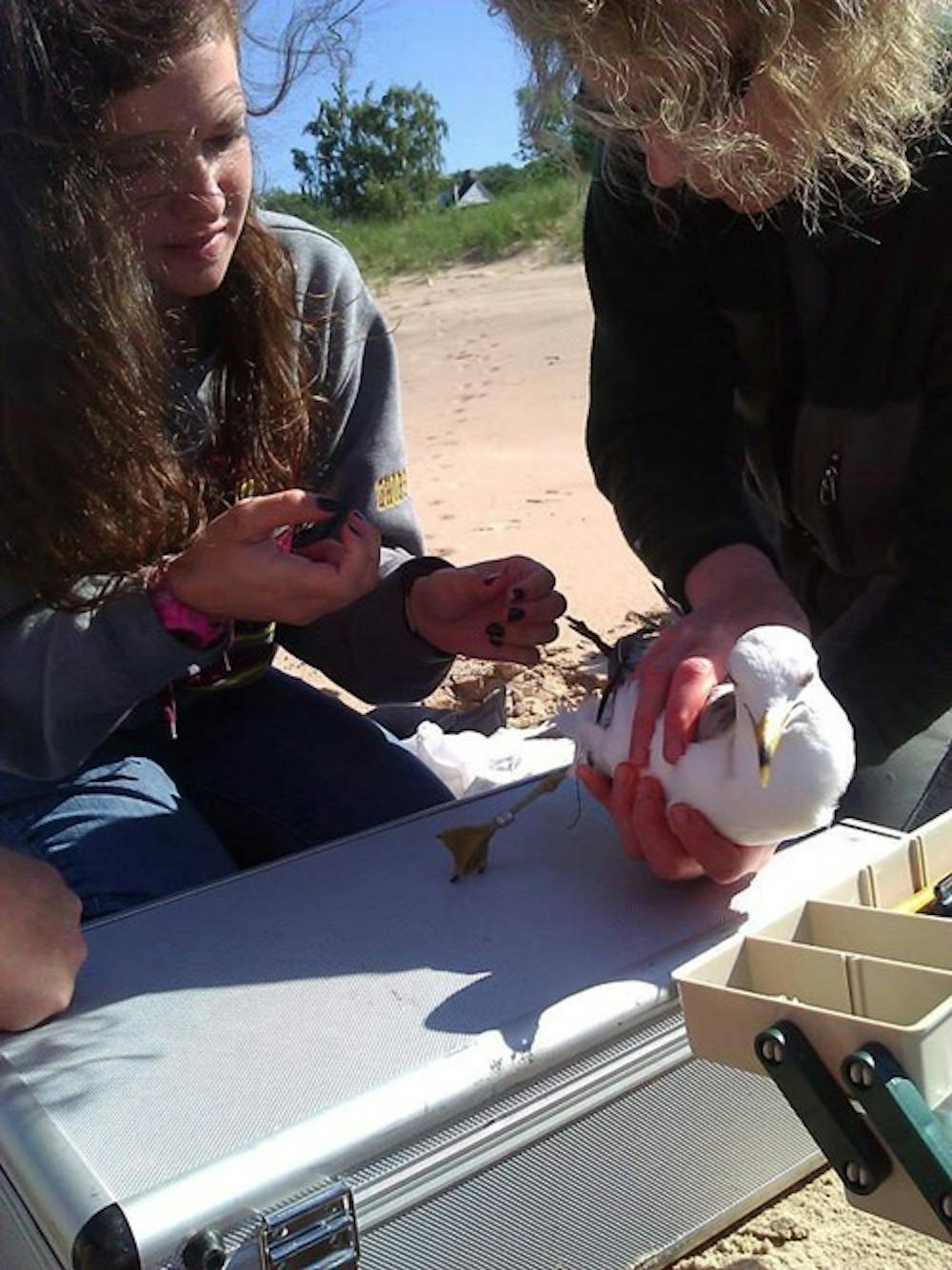Researchers use border collies to improve Great Lakes
A group of researchers at Central Michigan University have embarked on a two-year mission focused on improving the Great Lakes.
And they brought their dogs with them.
The group, comprised of students and professors, focused on studying and improving the quality of the water and shoreline of the Great Lakes with the use of border collies.
The five student field workers were responsible for taking two trained border collies to assigned beaches for four hours at sunrise and were required to return them four hours before sunset. The dog handlers were active on the beaches for the duration of the project.
“Our main concern here was that the gulls were traveling from the landfills nearby to the beaches and possibly carrying pathogens,” Holland senior Angela Miedema said.
Biology proffesor Elizabeth Alm said there are record-high numbers of gulls infesting the shoreline of the Great Lakes and spreading dangerous bacteria such as E. coli through their feces.
The two border collies used in the study, which were previously trained and are a natural herding breed, were leased to the group of researchers and were used to chase the gulls away from the beaches.
The project is supported by a near $250,000 grant from the Environmental Protection Agency Great Lakes Restorative Initiative.
Alm said the grant was awarded “after a competitive review process."
“(The value of the grant) was the amount we requested; we put forth a budget of money including how much it would cost to pay students, lease the dogs and other expenses, and it turned out to be that amount,” Alm said.
There were four beach locations used in the study, all of which were in Ottawa County. Two beaches were utilized by the border collies and their handlers, while the other two beaches were left alone. A gull counter was assigned to both sets of beaches to gather a tally for numerical comparison.
Each location provided a sample of sand and water to the CMU microbiology lab every week as well, where four student team members aided the field researchers by tracking changes in the sample patterns.
The research project, led by CMU biology faculty Thomas Gehring and Alm, concluded at the end of the summer. However, Alm says data analysis and lab testing will continue through April.




